Halima Elbiaze
A Green Multi-Attribute Client Selection for Over-The-Air Federated Learning: A Grey-Wolf-Optimizer Approach
Sep 16, 2024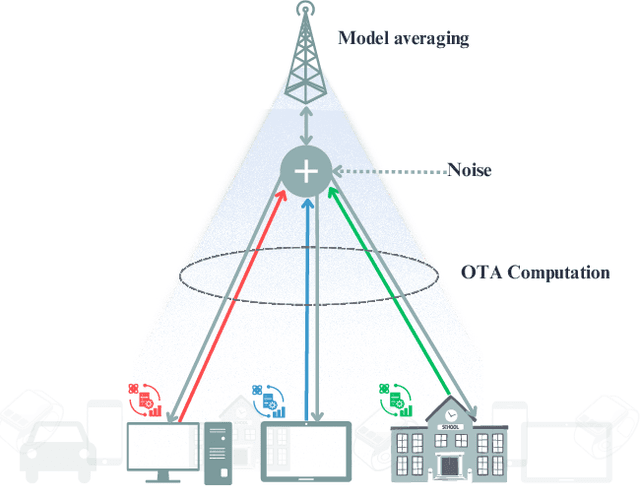
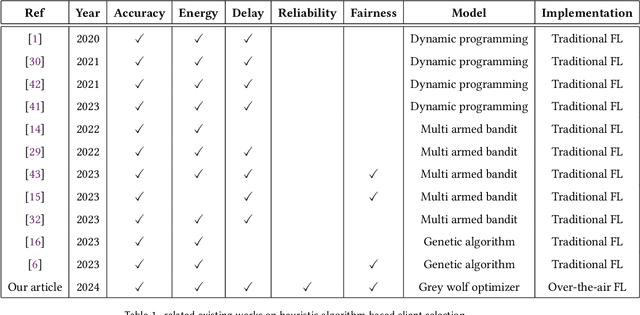
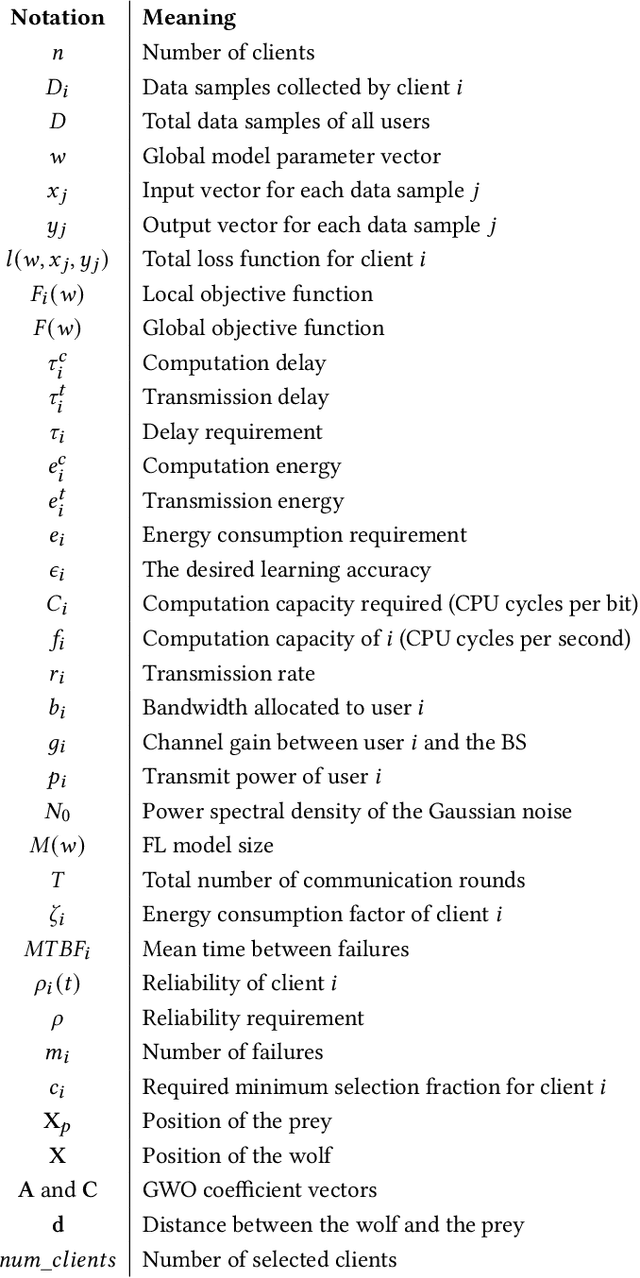
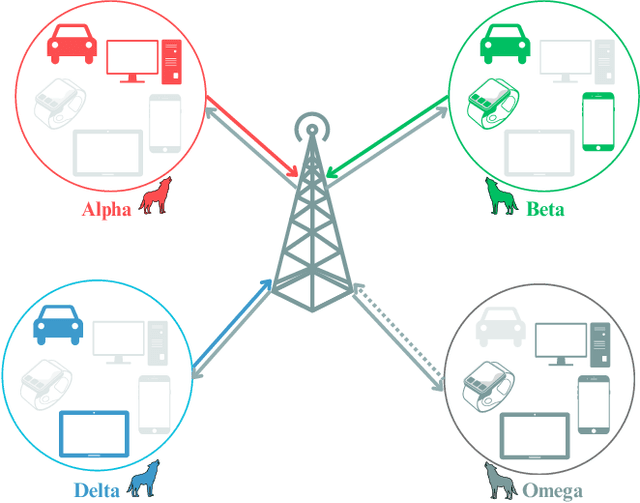
Abstract:Federated Learning (FL) has gained attention across various industries for its capability to train machine learning models without centralizing sensitive data. While this approach offers significant benefits such as privacy preservation and decreased communication overhead, it presents several challenges, including deployment complexity and interoperability issues, particularly in heterogeneous scenarios or resource-constrained environments. Over-the-air (OTA) FL was introduced to tackle these challenges by disseminating model updates without necessitating direct device-to-device connections or centralized servers. However, OTA-FL brought forth limitations associated with heightened energy consumption and network latency. In this paper, we propose a multi-attribute client selection framework employing the grey wolf optimizer (GWO) to strategically control the number of participants in each round and optimize the OTA-FL process while considering accuracy, energy, delay, reliability, and fairness constraints of participating devices. We evaluate the performance of our multi-attribute client selection approach in terms of model loss minimization, convergence time reduction, and energy efficiency. In our experimental evaluation, we assessed and compared the performance of our approach against the existing state-of-the-art methods. Our results demonstrate that the proposed GWO-based client selection outperforms these baselines across various metrics. Specifically, our approach achieves a notable reduction in model loss, accelerates convergence time, and enhances energy efficiency while maintaining high fairness and reliability indicators.
Federated Learning for 6G: Paradigms, Taxonomy, Recent Advances and Insights
Dec 07, 2023Abstract:Artificial Intelligence (AI) is expected to play an instrumental role in the next generation of wireless systems, such as sixth-generation (6G) mobile network. However, massive data, energy consumption, training complexity, and sensitive data protection in wireless systems are all crucial challenges that must be addressed for training AI models and gathering intelligence and knowledge from distributed devices. Federated Learning (FL) is a recent framework that has emerged as a promising approach for multiple learning agents to build an accurate and robust machine learning models without sharing raw data. By allowing mobile handsets and devices to collaboratively learn a global model without explicit sharing of training data, FL exhibits high privacy and efficient spectrum utilization. While there are a lot of survey papers exploring FL paradigms and usability in 6G privacy, none of them has clearly addressed how FL can be used to improve the protocol stack and wireless operations. The main goal of this survey is to provide a comprehensive overview on FL usability to enhance mobile services and enable smart ecosystems to support novel use-cases. This paper examines the added-value of implementing FL throughout all levels of the protocol stack. Furthermore, it presents important FL applications, addresses hot topics, provides valuable insights and explicits guidance for future research and developments. Our concluding remarks aim to leverage the synergy between FL and future 6G, while highlighting FL's potential to revolutionize wireless industry and sustain the development of cutting-edge mobile services.
On Computing In the Network: Covid-19 Coughs Detection Case Study
Jul 18, 2023Abstract:Computing in the network (COIN) is a promising technology that allows processing to be carried out within network devices such as switches and network interface cards. Time sensitive application can achieve their quality of service (QoS) target by flexibly distributing the caching and computing tasks in the cloud-edge-mist continuum. This paper highlights the advantages of in-network computing, comparing to edge computing, in terms of latency and traffic filtering. We consider a critical use case related to Covid-19 alert application in an airport setting. Arriving travelers are monitored through cough analysis so that potentially infected cases can be detected and isolated for medical tests. A performance comparison has been done between an architecture using in-network computing and another one using edge computing. We show using simulations that in-network computing outperforms edge computing in terms of Round Trip Time (RTT) and traffic filtering.
Graphical Probabilistic Routing Model for OBS Networks with Realistic Traffic Scenario
Jul 25, 2009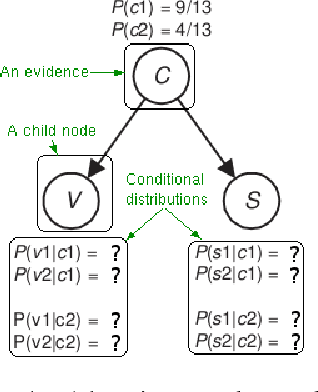
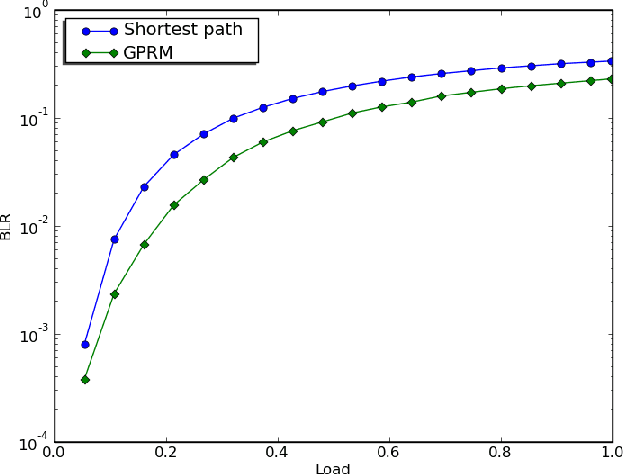

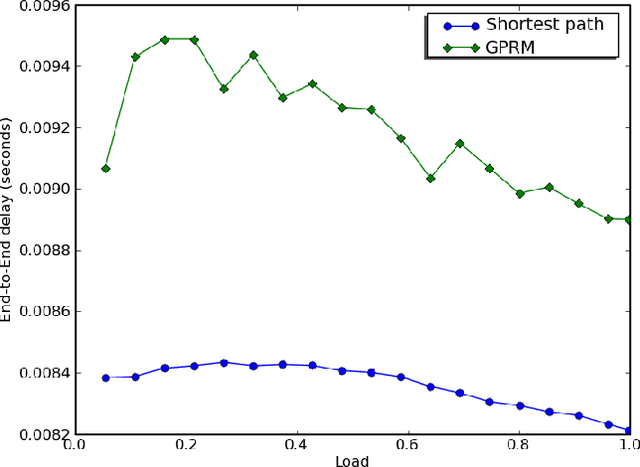
Abstract:Burst contention is a well-known challenging problem in Optical Burst Switching (OBS) networks. Contention resolution approaches are always reactive and attempt to minimize the BLR based on local information available at the core node. On the other hand, a proactive approach that avoids burst losses before they occur is desirable. To reduce the probability of burst contention, a more robust routing algorithm than the shortest path is needed. This paper proposes a new routing mechanism for JET-based OBS networks, called Graphical Probabilistic Routing Model (GPRM) that selects less utilized links, on a hop-by-hop basis by using a bayesian network. We assume no wavelength conversion and no buffering to be available at the core nodes of the OBS network. We simulate the proposed approach under dynamic load to demonstrate that it reduces the Burst Loss Ratio (BLR) compared to static approaches by using Network Simulator 2 (ns-2) on NSFnet network topology and with realistic traffic matrix. Simulation results clearly show that the proposed approach outperforms static approaches in terms of BLR.
* 6 pages
 Add to Chrome
Add to Chrome Add to Firefox
Add to Firefox Add to Edge
Add to Edge